Taking over the boat before you set sail is one of the most important tasks if you want your voyage to go without a hitch. But, if you were to check absolutely everything, you probably wouldn't end up sailing at all. Therefore, it's best to focus on the key items and equipment. We'll take you through a complete checklist of what to inspect and look for on your charter yacht.
Check-in at the marina: taking over the boat
Inspecting your rental boat at the marina can be divided into two main parts — external and internal inspection. The first thing you should do is turn on all the necessary switches in the saloon on the dashboard (the ones that make sense and won't trigger an unwanted operation, such as running the pump at idle, etc.).
Inspect the exterior of the boat: 10 things not to miss
1) Hull and deck
After turning on the switches, continue with a visual inspection of the deck, sides, stern and bow. Take a smartphone or camera with you and go around the entire outside of the boat, taking photos of any visible scratches (if you do not have a brand new boat, there will always be damage). Take a closer look at the edges of the boat at the stern and on the sides (these are prone to impact/abrasion from jetties due to insufficient use of fenders), the bow (charters look at bows a lot because they are relatively expensive to replace) and the bow area near the anchor (the bow can get damaged, especially by the anchor).
2) Engine – test its operation and shifting gear
Start the engine. Make sure it starts up without any problems. Shift to forward, try to accelerate, shift to neutral, shift to reverse and try accelerating again. Shifting gear should be smooth and you should always feel the transition between neutral, forward and reverse. Check that you can rev the engine in neutral to charge the batteries and make sure the engine is cooling down (the engine blows water from the exhaust).
3) Anchor and anchor windlass
Leave the engine running and go to the bow to check the anchor. Inspect the anchor-chain connection, the anchor itself and its position in the anchor mount (check the condition of the anchor, whether it is damaged, whether it is properly mounted, whether the mount is damaged, whether the end of the chain is securely attached to the anchor). Check the anchor controls and try lowering and raising the anchor.
YACHTING.COM TIP: What is the whole check-in procedure like? Find out everything you can expect when taking over a rental boat at the marina, what the charter company will need and how the check-in process works in our article — Charter boat check-in: a step-by-step guide. Plus, we've included tips on what to consider before signing the contract and the preparations to make at home before setting sail.
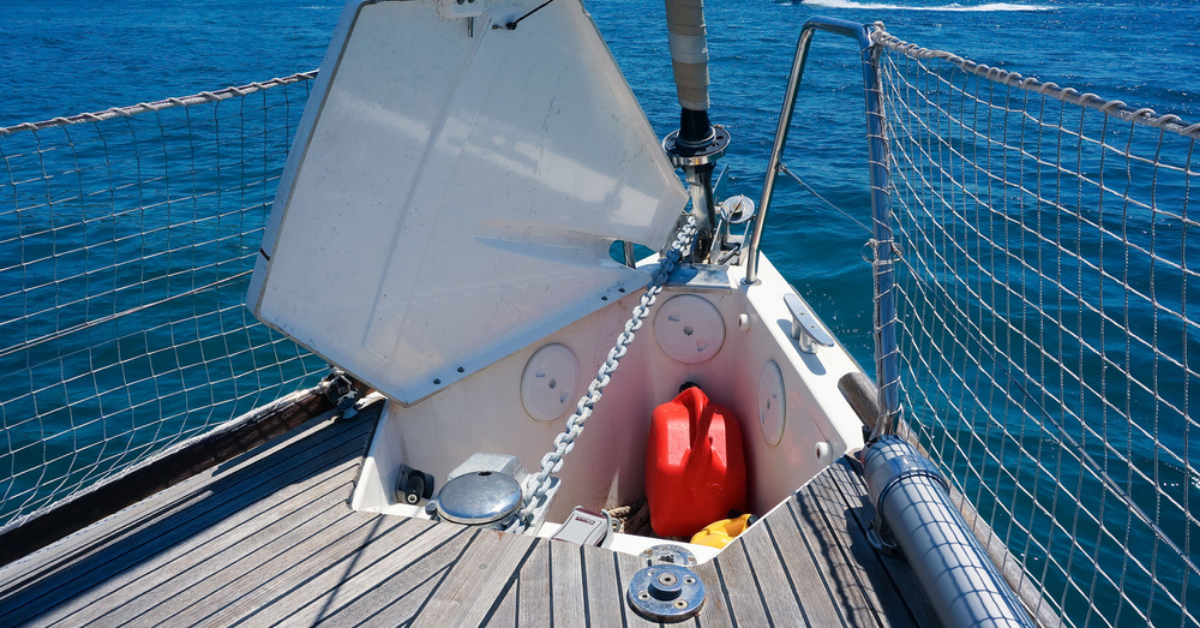
4) Rigging (sails, ropes and sailing-related items)
Weather permitting, hoist the sails one at a time. If the conditions don’t allow it, agree with the charter company that you will check the sails when first hoisted and if damaged, you’ll return to the marina. Or if the damage is minor and doesn’t impede sailing, you’ll provide photos (here it is up to the individual charter company to decide). If the sails are damaged, insist that they are repaired or replaced.
Check the lines (if they are frayed, insist they are replaced), winches (whether they are damaged and whether they operate smoothly), stoppers (whether they open/close well, whether they properly secure the lines), the boom mast attachment (whether there is a missing bolt nut or cotter pin). Visually inspect the mast, boom, the shrouds and the fore and aft stays for damage.
YACHTING.COM TIP: Have you ever considered renting a gennaker — the most common speciality sail seen on charter boats? When you rent a boat, you don't automatically get a gennaker as standard and is usually handed to you at check-in packed in a bag for you to rig and hoist yourselves. This may sound complicated, but there's really nothing to worry about — find out more in our article on 5 reasons to rent a gennaker.
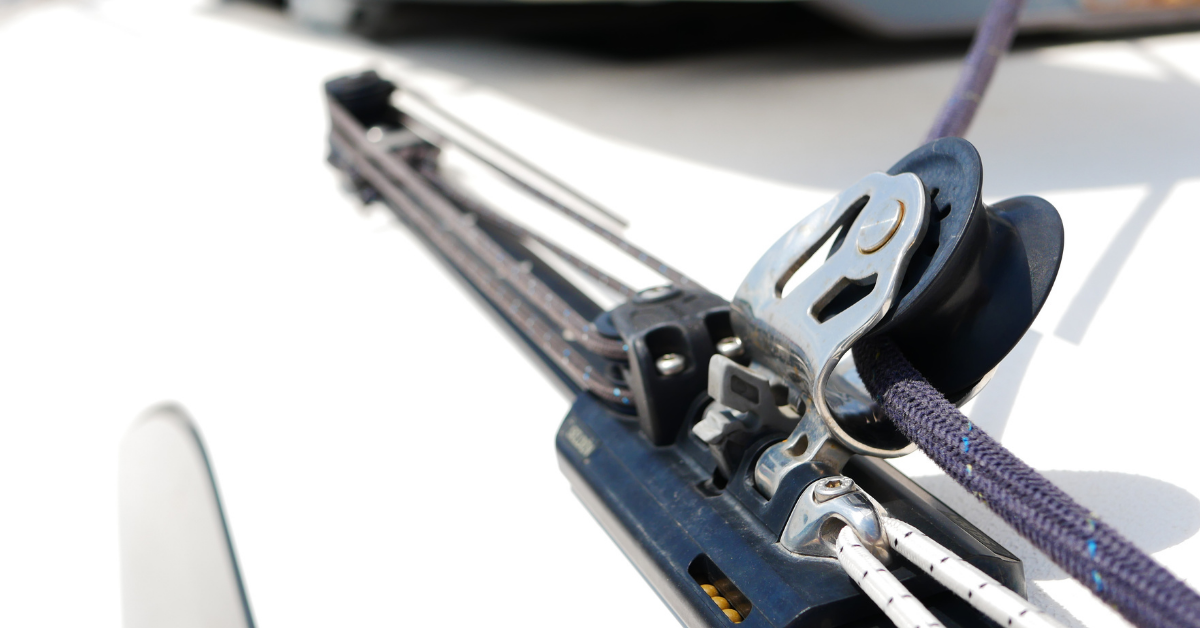
5) Onboard equipment
Check the instruments on board — the marine plotter, depth indicating instruments (check whether depth is measured from the waterline or from the bottom of the keel), wind direction and speed, and autopilot data. Check the lifebuoy and rescue light buoy (that everything is properly packed, that the line is properly attached to the buoy and boat, that the light turns on when lowered). Find out where the life raft is located (mandatory boat equipment for navigation in the area B — 200 NM from the coast). Check the onboard lights (position lights, engine light, stern light, deck light shining from the mast to the front of the deck).
6) Rudder and autopilot
Check the operation of the steering wheel(s) and the autopilot to see if it takes control of the rudders (try setting 10 ° to starboard and port and check it turns the rudders). Do a visual check of the rudder blade(s) (if you can see them from the jetty).
7) Outboard motor
If you are hiring an outboard motor, check that it is firmly attached to the railing and that there is a kill cord. Test it briefly on the mount by starting it, giving it some throttle and killing it.
8) Dinghy
Check that the dinghy is not damaged and that it is sufficiently inflated (no air leaks). If it is not sufficiently inflated, try to inflate it and see if any air is escaping.
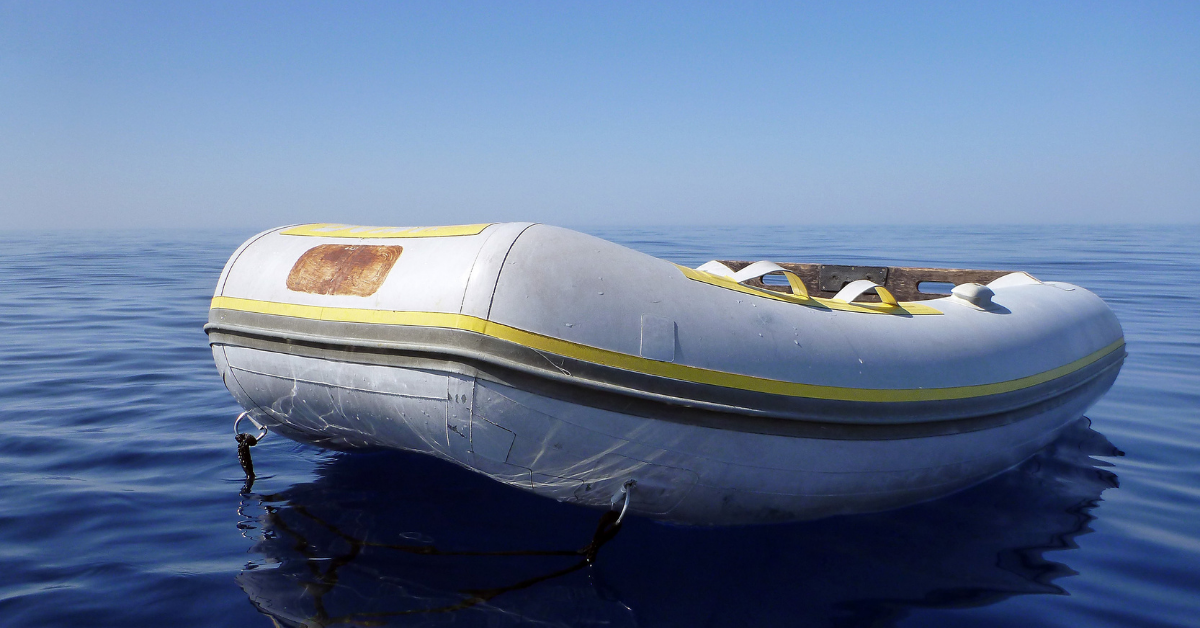
9) Cockpit lockers
Check the equipment in the cockpit lockers, including the storage space under the cockpit/helm floors. In the storage compartments, you should find a reserve tiller, reserve anchor, lines — especially a long anchor line (approx. 50 m) for mooring to the shore, a lever for the hand bilge pump (often attached to the bottom of the locker lid), a bucket, a scrubbing brush, water hose, paddles, a pump for the dinghy (try out the pump!), and a life raft.
10) Gas cylinders
Check the condition of the gas cylinders (whether they are full — feel the weight of the cylinders in your hand, whether the hose is worn, whether the valve works — turn on the valve and go test the stove and oven).
Read more interesting facts and information about boats and boat equipment:
Check the interior of the boat: 10 things to look for
1) Cooking
Turn on the gas at the stove (usually, you need to turn on the gas cylinder valve first and then under the stove/near the stove). Using a lighter or matches to light the flame. Gradually test that all hobs and ovens work. Check the galley cooking utensils.
2) Refrigerator
Check that the refrigerator is cooling and that the temperature can be regulated (if the fridge has the option). It is said that during summer, the refrigerator is the second most important thing on the boat after the engine.
3) Safety equipment
Check the number, location and condition of life jackets and harnesses. If you're sailing with children, make sure there are enough life jackets on board for both children and adults and whether the life jackets are large enough for the bulkier crew members. The number of lifejackets on board should the same as the capacity of the boat (one spare may be required). There are not usually enough harnesses on board for the entire crew (depending on the type and difficulty of the voyage, harnesses may be required for the entire crew).
Whether you're sailing with your own kids or your friend's, the trip and the boat need to be adapted slightly to ensure that everything goes smoothly and, above all, safely. Take a look at the most important guidelines to follow in our article — Sailing with kids: how to keep all of you safe and happy.
Find out about the location of fire extinguishers, fire axes and stay/shroud cutters. Check the signal equipment — flares and day shapes (cone and sphere). Find out where the first aid kit is and check its contents. Find out where the bosun’s chair is (if it isn’t is not on the boat, request it).
4) Navigation equipment
Check the navigation equipment — charts, navigation aids (compass/dividers, ruler, pencil, eraser), pilot/guide for the area.
YACHTING.COM TIP: Man Over Board (MOB) is something no sailor wants to experience. But when it happens, you need to know how to react quickly and correctly, because lives are at stake. Both the skipper and crew are under enormous stress the moment someone falls into the sea, so it is crucial to know the different steps to take and understand your role during a rescue operation. Find everything you need to know in Man Over Board (MOB): a step-by-step guide.

5) Toilets (the head)
Check that the toilets flush properly and that there is no water leakage around the toilet. Find out if there is a waste holding tank on board and where the cock is to drain it.
YACHTING.COM TIP: One of the important amenities on a boat is the toilet, known as the "head". Everyone can use one at home, but marine toilets are very specific. So, what different types of toilets can you find on a boat? How do you flush it? What can or can't you put down the toilet? How do you avoid spilling the contents of the tank, or sort out a clogged toilet? Find out the answers to these questions and more in our guide — Marine toilet: how to use it.
6) Water and tanks
Make sure that water flows and drains well everywhere in sinks and showers. Find out where to turn off the water and waste pipes. Ask about the location of the water tanks, how and where to switch water tanks (if there are multiple water tanks on the boat)and where the tank filler is. Ask if the tanks have been topped up (topping them up can help you determine if they are full).
7) VHF and other electrical equipment
Check the radio transmitter functionality — on/off, channel tuning/squelch test. Check the functionality of WiFi on board (if you’ve paid for it). Check the functionality of the sockets the fuel and water gauges and their condition. Don't skip the boat's switches — that they work, that they stay in the on/off positions. Ask about switches you don’t know the function of. Find out about the location of the main circuit breakers — the battery switches, the anchor windlass and the main power switch on the boat. Check the lights inside the boat.
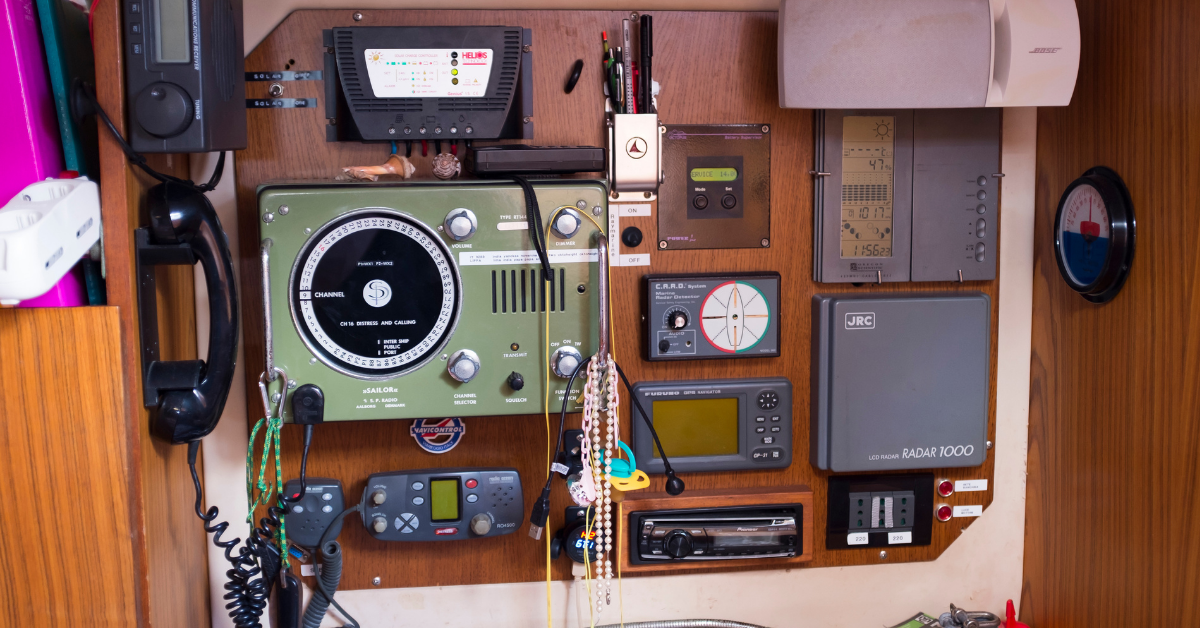
Have you already chosen a destination for your voyage?
8) Boat documents
The boat documents include the technical inspection certificate, a permit to sail in the area, a crew list and the boat's insurance (concession document). Require the charter company to provide you with a contact person in case any problems arise.
9) Engine
Open the engine compartment (most often found under the stairs to the saloon). Check for oil leaks — make sure the engine is not leaking and the area under the engine is dry and clean, you can also check the oil and coolant (dipsticks/gauges similar to as in a car), the tension of the V-belts if they are not covered under the hood (all the above-mentioned checks of fluids, engine condition and engine parts should have been performed by a charter company technician). Determine the location of the fuel tank filler. Ask if the tank is topped up and check the fuel gauge (unfortunately, neither the charter company nor the fuel gauge can often be trusted). If you want to be sure that the fuel tank is full, go to a filling station as soon as possible and refuel (this is the only way to be sure).
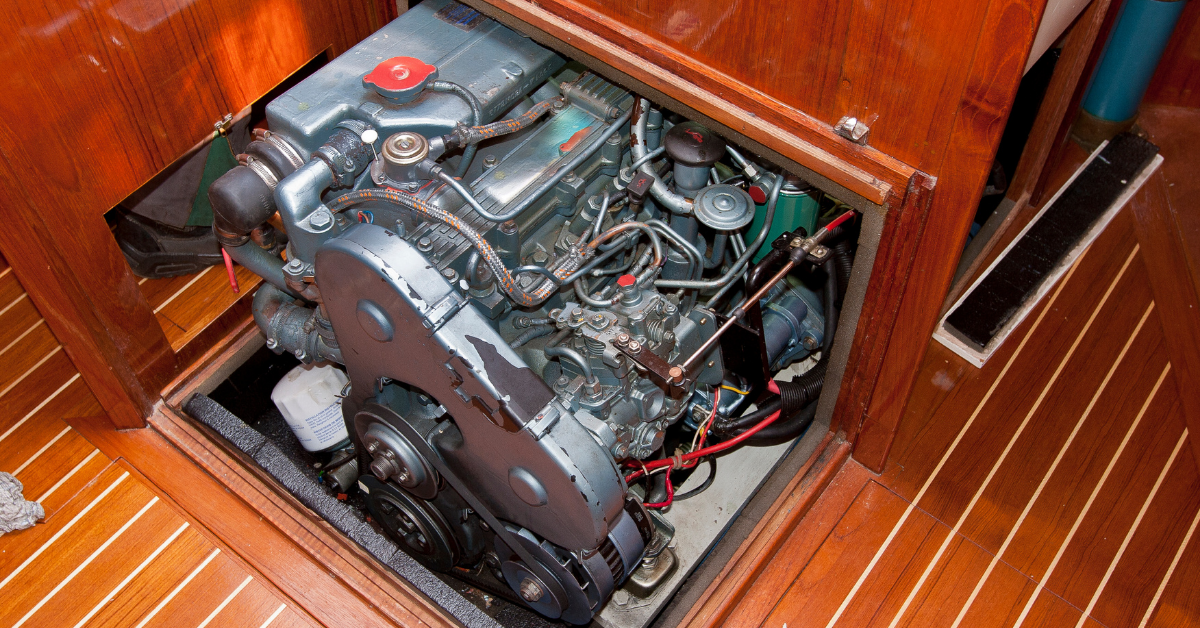
10) Tools and spare parts
Find out where the tools and spare parts for the engine are located. Check what tools there are.
YACHTING.COM TIP: A thorough boat takeover is not just a matter of minutes but once you set off, your holiday sails by and it's almost over before it starts. So how can you get the full benefits and catch all the fun? We've put together 10 good reasons to go sailing for at least 14 days.
Checklist summary: what to inspect when taking over your boat at check-in
Exterior
- Hull – deck, sides, bow, stern
- Engine – shifting, cooling
- Mooring – anchor, controls, windlass, chain
- Rigging – sails, lines, winches, stoppers, boom, mast
- Onboard equipment – instruments, lifebelt, life raft, lights
- Rudder – steering wheel/tiller, blade, autopilot
- Outboard engine – mounting, kill cord, start, throttle
- Dinghy – inflated?
- Cockpit lockers – contents of lockers and helm compartments (tiller, anchor, lines, bilge pump lever, hose, paddles and pump, life raft)
- Gas cylinders – fullness, valve, spare
Interior
- Cooking – hob, oven, kitchen utensils
- Refrigerator – cooling
- Safety equipment – life jackets, harnesses, fire extinguishers, axe, stay/shroud cutters, first aid kit
- Navigation equipment - maps, navigation aids, pilot for the area
- Toilets – flush, no leaks
- Water and tanks – water flows, drains well, switch tanks
- VHF and other electrical equipment – VHF, Wifi, sockets, boat switches, main breakers, lights
- Paperwork – technical certificate, permission to sail, crew list, boat insurance, concession document, emergency contact
- Engine – dry and clean, fuel filler
- Tools and spare parts – types of tools, individual parts
YACHTING.COM TIP: In addition to checking the boat thoroughly when taking it over, a packing checklist for your boating holiday comes in really handy — Sailing essentials: don't forget to pack these things.
